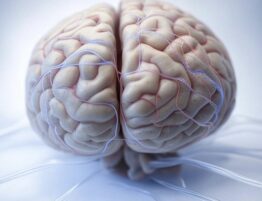There are a lot of rare genetic disorders. One of them is hepatolenticular degeneration or, newer name, Wilson’s Disease. It is generally characterized by the body’s inability to metabolize copper. Such illness leads to its accumulation in various organs, particularly the liver and brain. The condition may manifest differently in each individual. Its impact can be profound, affecting both physical and neurological health. Let’s delve into the complexities of Wilson’s disease, exploring its underlying mechanisms. Also, examining diagnostic challenges and available treatment options is pivotal. Despite its rarity, Hepatolenticular degeneration poses significant clinical implications. They require careful management and ongoing medical supervision.
Shedding light on this lesser-known condition makes a great deal. We aim to raise awareness among healthcare professionals and the general public. Also, we facilitate early detection, timely intervention, and improved outcomes. It is crucial for individuals affected by such illness. We demonstrate a comprehensive understanding of its nuances and subtleties. Thus, we strive to empower patients and healthcare providers to cope with the complexities of this genetic illness.
What is Wilson’s Disease?
This rare genetic disorder is usually characterized by the body’s inability to metabolize copper. It accumulates high copper levels in various organs, particularly the liver and brain. Mutations in the ATP7B gene usually cause this condition. It encodes a protein responsible for transporting excess copper out of the body through bile. Without the proper function of this protein, copper builds up in the liver and eventually spills into the bloodstream. It causes damage to other organs, such as the brain, kidneys, and eyes. Wilson’s disease can manifest with a range of signs. They include fatigue, jaundice, abdominal pain, and neurological problems. Among them are tremors and difficulty walking, and psychiatric symptoms such as depression and anxiety.
If left untreated, such illness can lead to severe complications. They include liver failure and neurological damage. Early detection and treatment are crucial for managing Wilson’s disease. Treatment typically involves lifelong use of medications. They help to remove excess copper from the body and dietary modifications to restrict copper intake. In some cases, liver transplantation may be necessary for individuals with severe liver damage.
High Copper Levels: The Core Issue in Wilson’s Diseas
In this genetic disorder, abnormal copper levels pose a significant health risk. They impact various organs and bodily functions. Here’s a closer look at the role of high copper levels in this condition:
- Accumulation in Organs: Excess copper accumulates in the liver, brain, and eyes. It leads to tissue damage and dysfunction.
- Liver Damage: High copper levels in the liver can cause inflammation, scarring, and impaired liver function. It contributes to a range of symptoms and complications.
- Neurological Symptoms: Copper accumulation in the brain can lead to neurological signs. Among them are tremors, muscle stiffness, and cognitive impairment. They affect both motor and cognitive function.
- Blood Copper Levels: Monitoring copper levels in blood is crucial for diagnosing and managing illness. Elevated levels can indicate copper accumulation and potential organ damage.
- Ocular Manifestations: In some cases, they can also affect the eyes. It leads to Kayser-Fleischer and golden-brown rings around the cornea.
- Treatment Target: Lowering copper levels through medication and dietary modifications is crucial. It aims to prevent further organ damage and alleviate symptoms.
Understanding the core issue of high copper levels is essential. It helps for accurate diagnosis, effective treatment, and improved outcomes for individuals affected.
Symptoms of Wilson’s Disease
 The typical clinical picture encompasses a diverse array of manifestations. They reflect the multisystem nature of this condition. It is from hepatic dysfunction to neurological impairment and ocular abnormalities. The symptoms of Wilson’s disease can vary widely in presentation and severity. Understanding the spectrum of manifestations is crucial for timely diagnosis and intervention. Early recognition and management can mitigate disease progression and improve patient outcomes.
The typical clinical picture encompasses a diverse array of manifestations. They reflect the multisystem nature of this condition. It is from hepatic dysfunction to neurological impairment and ocular abnormalities. The symptoms of Wilson’s disease can vary widely in presentation and severity. Understanding the spectrum of manifestations is crucial for timely diagnosis and intervention. Early recognition and management can mitigate disease progression and improve patient outcomes.
Fatigue
Individuals often experience persistent and overwhelming tiredness that can impact daily functioning. This fatigue may result from liver dysfunction, which can impair energy metabolism and lead to decreased stamina. Neurological disorders may contribute to fatigue. This is due to disturbances in sleep patterns or energy regulation. Managing fatigue in Wilson’s disease typically involves addressing underlying liver and neurological complications.
Jaundice
Jaundice manifests as yellowing of the skin and eyes due to liver damage. Excess copper buildup in the liver impairs its ability to process bilirubin, a waste product of red blood cell breakdown. Consequently, bilirubin accumulates in the bloodstream, leading to the characteristic yellow discoloration. Jaundice often indicates advanced liver involvement. It necessitates prompt medical attention to mitigate further liver damage.
Abdominal pain and swelling
Abdominal pain and swelling are hallmark symptoms of Wilson’s disease. The accumulation of copper in the liver can lead to inflammation and enlargement. It results in discomfort and bloating in the upper right abdomen. This pain may vary in intensity and can be generally accompanied by nausea or vomiting. Addressing the underlying cause of liver dysfunction is essential in managing abdominal signs.
Easy bruising
Liver dysfunction can lead to decreased production of clotting factors. It results in a tendency to bruise easily. Its impaired function can hinder the breakdown of old red blood cells, contributing to increased bruising. Monitoring bruising frequency and severity can aid in diagnosing and managing Wilson’s disease.
Changes in neurological function
Wilson’s disease can manifest with changes in neurological function. It may be tremors, difficulty walking, and cognitive impairment. Copper accumulation in the brain disrupts normal neurological processes. It leads to signs like involuntary movements, coordination problems, and cognitive decline. If left untreated, these changes may progress over time, affecting speech, memory, and overall brain function. Early detection and treatment are crucial to prevent or cut neurological complications.
Wilson’s Disease Diagnosis
Diagnosing this illness can be complex and multifaceted. A comprehensive approach will confirm the presence of the condition accurately. Here’s an overview of the critical aspects involved in Wilson’s disease diagnosis:
Clinical Evaluation:
- Symptom Assessment: Physicians test the patient’s medical history and conduct a physical examination. It helps to assess signs of disease. Among them are hepatic dysfunction, neurological abnormalities, and ocular manifestations.
- Family History: A family history of Wilson’s illness or unexplained liver disease may raise suspicion. Also, it prompts further investigation.
Laboratory Tests:
- Copper Studies: Blood tests are generally conducted to measure copper and ceruloplasmin levels. It is a protein that binds to copper. Reduced ceruloplasmin levels alongside elevated copper levels may indicate Wilson’s disease.
- Liver Function Tests: Assess liver enzymes and function to detect signs of hepatic dysfunction. Among them are abnormal bilirubin levels or elevated liver enzymes.
Imaging Studies:
- Liver Imaging: Imaging ultrasound, CT scans, or MRI may assess liver size. Also, they can detect abnormalities and test for signs of liver damage or cirrhosis.
- Brain Imaging: MRI or CT scans of the brain may be generally performed to assess for neurological abnormalities. Among them are copper deposition or structural changes.
Genetic Testing:
- DNA Analysis: Genetic testing may identify mutations in the ATP7B gene. It is responsible for copper transport and metabolism. Specific mutations can confirm a diagnosis of Wilson’s disease. This is particularly true in cases where clinical and laboratory findings are inconclusive.
Copper Accumulation Testing:
- 24-Hour Urinary Copper Test: This test measures the amount of copper excreted in the urine over 24 hours. Elevated urinary copper levels may indicate excessive copper accumulation in the body. It supports a diagnosis of Wilson’s disease.
Liver Biopsy (if necessary):
- A liver biopsy can sometimes check liver tissue. Sometimes, it may be a sign of copper accumulation, inflammation, fibrosis, or cirrhosis. It provides additional diagnostic information.
A thorough Wilson’s disease diagnosis requires collaboration between healthcare professionals from various specialties. They include hepatology, neurology, and genetics. Such specialists assess clinical findings, laboratory results, and imaging studies. Early detection and intervention are crucial in managing Wilson’s disease. It is also pivotal for preventing irreversible organ damage.
Wilson’s Disease Treatments
 Managing such illness therapy involves a combination of pharmacological and non-pharmacological interventions. They aim to reduce copper accumulation, prevent organ damage, and alleviate signs. Here are the critical aspects of Wilson’s disease treatment:
Managing such illness therapy involves a combination of pharmacological and non-pharmacological interventions. They aim to reduce copper accumulation, prevent organ damage, and alleviate signs. Here are the critical aspects of Wilson’s disease treatment:
Copper Chelation Therapy:
- D-Penicillamine: This chelating agent binds to excess copper in the body. It facilitates its excretion through urine. D-penicillamine is often the first-line treatment for Wilson’s disease. It helps reduce copper levels.
- Trientine: This is an alternative copper chelator. It is always used when D-penicillamine is not tolerated or contraindicated. Similar to D-penicillamine, trientine binds to copper and promotes its elimination.
Zinc Supplementation:
- Zinc Acetate or Zinc Sulfate: Zinc acts as a competitive inhibitor of copper absorption in the intestines. It reduces copper uptake. Zinc supplements are commonly used for maintenance healing. It is pivotal after initial copper reduction through chelation therapy.
Dietary Modifications:
- Low-Copper Diet: Patients must follow a low-copper diet, avoiding high-copper foods. Among them are shellfish, nuts, chocolate, and organic meats.
- High-Protein Diet: A high-protein diet may promote the binding of copper in the intestines. It reduces its absorption.
Monitoring Ceruloplasmin Levels:
- Ceruloplasmin Levels in Wilson Disease: This is a copper-binding protein synthesized in the liver. In such illnesses, impaired copper metabolism often decreases ceruloplasmin levels. Monitoring ceruloplasmin levels can help assess response to treatment and disease progression.
Liver Transplantation (in severe cases):
- For people with advanced liver disease or those who do not respond to drug therapy, a liver transplant may be necessary. Liver transplantation can effectively replace the dysfunctional liver with a healthy donor liver. It restores normal liver function and improves overall health.
Ongoing Monitoring and Management:
- Monitoring copper levels, liver function tests, and neurological status is essential. They help to assess treatment response and adjust therapy as needed.
- Long-term adherence to treatment and close follow-up with healthcare providers is crucial. It helps manage Wilson’s disease and minimize the risk of complications from the illness.
A practical Wilson’s disease treatment tactic. It addresses copper accumulation and associated signs, which is essential. Individuals with such illness can effectively manage it and lead fulfilling lives. Early diagnosis, timely intervention, and adherence to treatment regimens are pivotal. They help in optimizing outcomes for patients with disease.
Conclusion
This illness presents a complex interplay of symptoms, diagnosis, and treatment modalities. Early recognition symptoms of Wilson’s disease. Among them are hepatic dysfunction, neurological deficits, and ocular manifestations. Early distinction is crucial for timely intervention. Diagnostic approaches include clinical evaluation, laboratory tests, imaging studies, and genetic analysis. They aid in confirming the diagnosis. Treatment strategies include several aspects. If necessary, copper chelation therapy, zinc supplementation, dietary modification, and liver transplantation. They aim to mitigate copper accumulation and alleviate symptoms. Through comprehensive management, individuals with Wilson’s disease can achieve improved outcomes.
FAQ
Can Wilson’s Disease be cured?
Wilson’s Disease is incurable, but it can be effectively managed with treatment. It helps to control copper levels and alleviate symptoms.
What type of doctor treats Wilson’s disease?
Hepatologists typically treat Wilson’s Disease. He specializes in liver diseases.
How is Wilson’s Disease inherited?
Wilson’s Disease is always inherited in an autosomal recessive pattern. This means an individual must inherit two copies of the defective gene, one from each parent, to develop the condition.
Is Wilson’s Disease common?
Wilson’s Disease is generally considered rare. It happens with an estimated prevalence of around 1 in 30,000 individuals worldwide.












Please, leave your review
Write a comment: